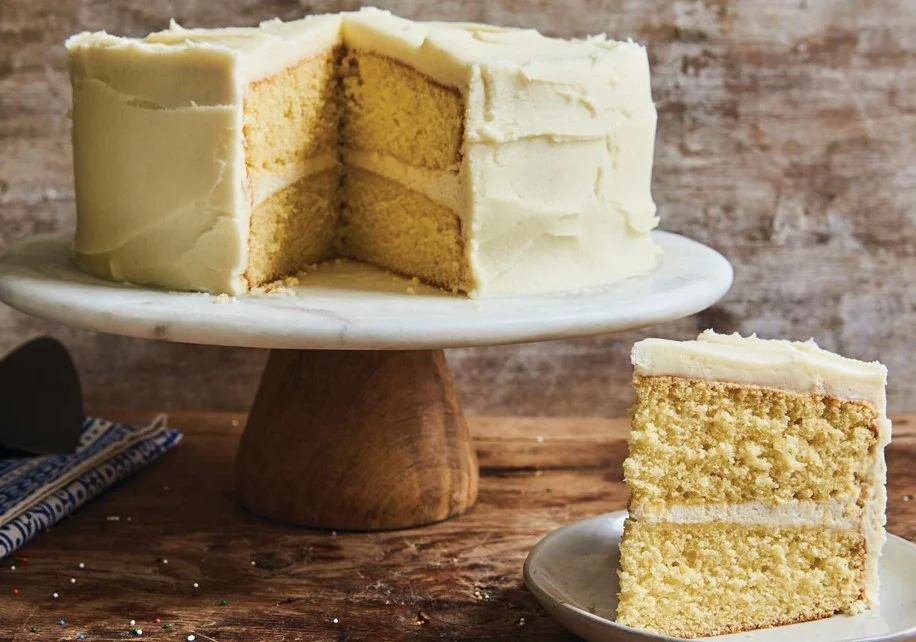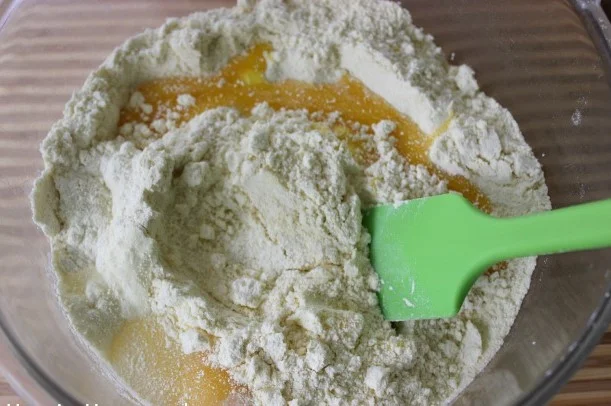Indulge in the rich and moist delight of a reverse creaming vanilla cake recipe. This classic recipe takes a unique twist by incorporating the reverse creaming method, resulting in a tender crumb and a velvety texture that will leave you craving for more.
Perfect for any occasion, this vanilla cake is sure to impress your family and friends. Let’s dive into the recipe and discover the magic of reverse creaming!

How To Prepare Reverse Creaming Vanilla Cake Recipe?
Preparation Time: 20 minutes
Cooking Time: 30-35 minutes
Serving Size: 12 servings
Equipment:
- Mixing bowls
- Electric mixer or stand mixer
- Whisk
- 9-inch round cake pans
- Parchment paper
- Cooling rack
- Offset spatula
Ingredients:
For the cake:
- 2 ¾ cups all-purpose flour
- 2 ½ teaspoons baking powder
- ½ teaspoon baking soda
- ½ teaspoon salt
- 1 ¾ cups granulated sugar
- ¾ cup unsalted butter, softened
- 4 large eggs
- 2 teaspoons vanilla extract
- 1 ½ cups buttermilk
For the frosting:
- 2 ½ cups heavy cream
- ⅓ cup powdered sugar
- 2 teaspoons vanilla extract
Directions For Cooking:
Step 1: Preheat your oven to 350°F (175°C). Grease two 9-inch round cake pans and line the bottoms with parchment paper.
Step 2: In a mixing bowl, whisk together the all-purpose flour, baking powder, baking soda, and salt. Set aside.
Step 3: In a separate large mixing bowl, combine the granulated sugar and softened butter. Using an electric mixer or stand mixer fitted with the paddle attachment, beat on medium speed until light and fluffy, about 2-3 minutes.
Step 4: Add the eggs one at a time, beating well after each addition. Stir in the vanilla extract.
Step 5: Reduce the mixer speed to low. Gradually add the dry ingredient mixture to the butter mixture in thirds, alternating with the buttermilk, beginning and ending with the dry ingredients. Mix just until combined, being careful not to overmix.
Step 6: Divide the batter evenly between the prepared cake pans, smoothing the tops with an offset spatula.
Step 7: Bake in the preheated oven for 30-35 minutes or until a toothpick inserted into the center of the cakes comes out clean.
Step 8: Remove the cakes from the oven and let them cool in the pans for 10 minutes. Then transfer the cakes to a cooling rack to cool completely.
Step 9: While the cakes are cooling, prepare the frosting. In a chilled mixing bowl, combine the heavy cream, powdered sugar, and vanilla extract. Using an electric mixer or stand mixer fitted with the whisk attachment, whip the cream on medium-high speed until stiff peaks form.
Step 11: Once the cakes have cooled, spread a generous amount of whipped cream frosting on top of one cake layer. Place the second cake layer on top and frost the entire cake with the remaining whipped cream.
Step 12: Decorate the cake as desired and refrigerate for at least 1 hour before serving to allow the frosting to set.
Nutrition Facts
- Calories: 293
- Total Fat: 16 g;
- Saturated Fat: 9 g;
- Cholesterol: 83 mg;
- Sodium: 256 mg;
- Potassium: 165 mg;
- Total Carbohydrates: 34 g;
- Dietary Fiber: 0 g;
- Sugars: 25 g;
- Protein: 3 g.
What Is The Difference Between Creaming And Reverse-Creaming Methods?
Creaming is just as it sounds the butter and sugar are beaten together until fluffy, smooth, light and airy.
Reverse creaming is a unique technique of creaming that incorporates some air into the batter before combining it with eggs and flour.
You can use this technique with regular recipes that generally use a lot of baking powder or baking soda.
This will not change the taste of the batter, but you may find that your cakes rise quickly and then sink as they cool.
How Do You Reverse Curdling A Cake Mix?
You can reverse-curdle a cake mix by following the same steps that you would use if you were to curdle cheese (milk) or pudding (milk and eggs).
These steps include:

1. Mix the dry ingredients in one large bowl, separate them into two bowls, and then pour half of the batter into each bowl. Then add the ingredients for one of these mixtures over the top. Mix well and repeat for the other mixture.
2. Using a rubber spatula, stir until combined after each addition. Do not overmix.
3. Carefully stir about ⅓ cup of the wet mixture into the beaten egg whites in a separate bowl to lighten them up. Then gently fold the egg whites into the rest of the batter.
What Are The Disadvantages Of The Creaming Method?
1. Using creamed butter and sugar, cakes will tend to be heavy, dense and dull in flavour.
2. You may find that your cakes can absorb a lot of moisture from the flour. If you are using cake mix recipes (and are not interested in experimenting), you might want to stick with the reverse-creaming method.
Conclusion
Creaming or reverse creaming vanilla cake recipe is just a matter of preference. But if you are into baking, I recommend trying a few creaming recipes to see how they are done.
Learning the creaming and reverse-creaming methods will allow you to develop your recipes and understand how ingredients react.